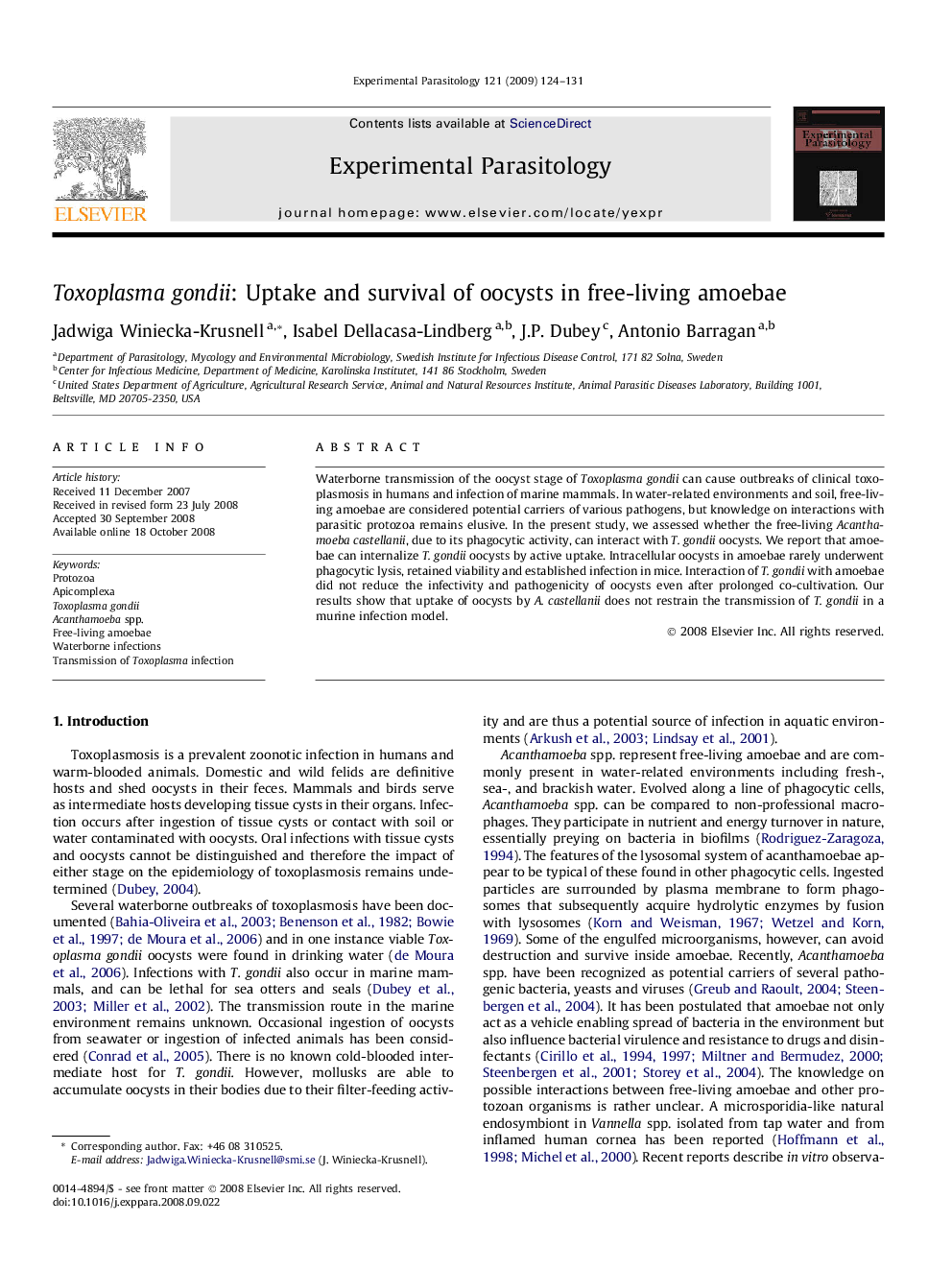| Article ID | Journal | Published Year | Pages | File Type |
|---|---|---|---|---|
| 4371353 | Experimental Parasitology | 2009 | 8 Pages |
Abstract
Waterborne transmission of the oocyst stage of Toxoplasma gondii can cause outbreaks of clinical toxoplasmosis in humans and infection of marine mammals. In water-related environments and soil, free-living amoebae are considered potential carriers of various pathogens, but knowledge on interactions with parasitic protozoa remains elusive. In the present study, we assessed whether the free-living Acanthamoeba castellanii, due to its phagocytic activity, can interact with T. gondii oocysts. We report that amoebae can internalize T. gondii oocysts by active uptake. Intracellular oocysts in amoebae rarely underwent phagocytic lysis, retained viability and established infection in mice. Interaction of T. gondii with amoebae did not reduce the infectivity and pathogenicity of oocysts even after prolonged co-cultivation. Our results show that uptake of oocysts by A. castellanii does not restrain the transmission of T. gondii in a murine infection model.
Keywords
Related Topics
Life Sciences
Immunology and Microbiology
Parasitology
Authors
Jadwiga Winiecka-Krusnell, Isabel Dellacasa-Lindberg, J.P. Dubey, Antonio Barragan,
